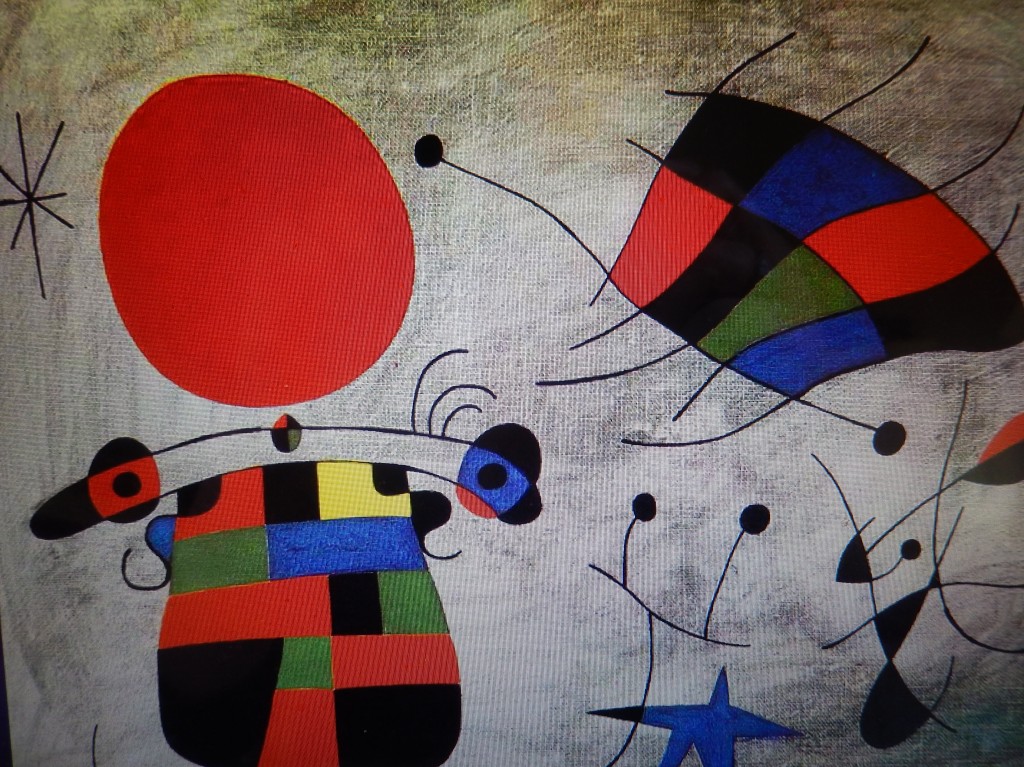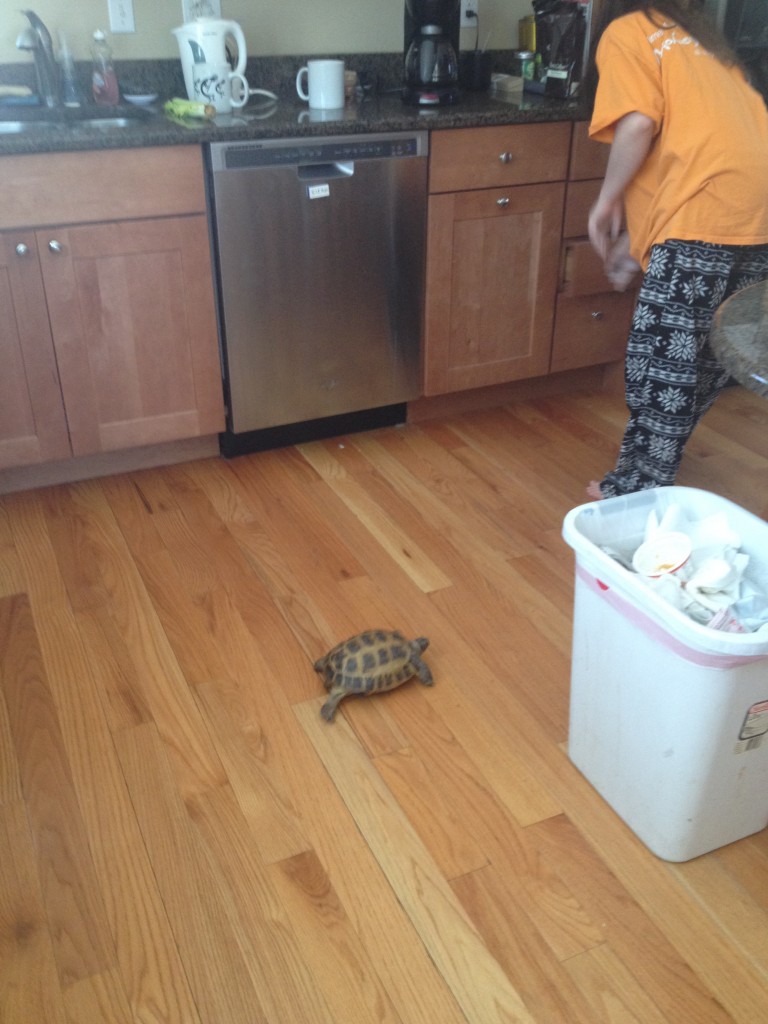6-30–There’s nothing quite like French pastries. Andy met us at our hotel this morning and led us a few blocks away to the central square in Poitiers where we enjoyed croissants and other goodies with our cafe au lait. Afterwards we walked to the city market where Andy bought some fruit, nuts and cheese for our picnic later in the day. Andy told us the best part of living where he does means he rarely needs to use a car. His studio, the kids’ school and shopping are all a short walk away. After living here so long, Andy recognizes many people in town and stops to say bonjour. The day here was already very hot by noon so we agreed to rest a while and meet again at 4 to see more of the town.
Poitiers is a picturesque town, filled with many important medieval churches and buildings. Many visitors from Denmark and Great Britian make excursions here and Andy used to lead tour groups for Elderhostel. The town actually dates back to Roman times when there was a large city wall (still partially intact) and a coliseum that held 30,000 people, second in size only to the one in Rome. One of the most important sights here is a low, round stone building that was used as a baptistry. It is the oldest Christian building in France. When the Romans converted to Christianity in the fourth century the bishop in Poitiers used this building to perform mass baptisms. Next door is the town cathedral, which boasts of some of the oldest stained glass in France and the oldest choir stalls. Andy flipped up one of the choir stall seats to see if there was anything unusual carved underneath. Apparently some rogue carvers sometimes added humorous touches in hidden spots. There was nothing though. A short distance away we visited the town museum, which housed many Roman artifacts that have been dug up during building projects. There were beautiful stone statues, delicate glass bowls, etchings and mosiac tile floors. It reminded me of seeing Pompeii many years ago, where the whole city froze in time when a volcano buried it.
If I come back to France again for any longer period of time I’ll be sure to learn some French. It’s amazing how insecure you feel when you can’t communicate even basic things with people. Fortunately we had Andy to help us most of the time, but the few times he wasn’t around we ran into trouble. It seems like the average person here knows just about as much English as we do French. C’est la vie…
At 7:00 the temperature was still stifling. It seems we have entered a heat wave here. Ugh. After downing two bottles of Perrier at a little cafe while we listened to a a group of American high school students perform some jazz, we headed over to the city park for a picnic. Andy prepared a delicious salad with lettuce, tomato, cucumber, duck, radish and peanuts, tossed with a ginger-soy dressing. We also had fresh cantelope, bread, cheese, wine, bing cherries and ice cream bars for dessert. The kids played frisbee and badminton and we watched other kids frolicking in the fountain and a young couple kissing on the grass.
Back in our hotel room, we luxuriated in the air conditioning and took cold showers. We listened to the world news for the first time in a week or so and heard about the big heat wave in Europe. Unfortunately the temperatures won’t go down any time soon. The other big story was the Greek debt crisis. Greece is a tiny country. The news reporter said China creates another Greece economically every 26 days! However, Greece is a powerful symbol of European culture. For Greece to leave the European Union would signal a real loss. Pretty soon Peter turned the channel to sports. He’s been away from sports for several weeks so he was pretty excited to watch the women’s World Cup, even though it started at 1 a.m. He stayed up until the game was over at 3. I fell asleep as I do most nights, with a book in my hand.
7-1–Today was a travel day. We bade farewell to Andy and Poitiers (after more croissants for breakfast) and hit the road for a six-hour drive to Geneva. The first five hours of our trip consisted of the unremarkable, flat farm land of central France. The only sight that caught my attention were the rolls of hay in the fields, which reminded me of the haystack paintings by Van Gough. Finally during the last hour of the trip we crossed into mountainous terrains, with many tunnels and high passes. We were approaching the Alps.
We made one stop at a gas station / restaurant and filled up on snacks, including our favorite Kinder chocolates. The European rest stops are quite nice, much cleaner and spifier than their American counterparts–with sleek architecture and full-service restaurants. I knew I was in France when I saw a full section in the store of mustards. I bought my dad a gift pack with three types.
Twenty years ago Peter and I traveled through Europe in a small Renault car and enjoyed sights all the way from Amsterdam to Spain. One of our favorite places was Interlaken, a small town in the middle of two lakes in a Swiss valley. Interlaken is a perfect base camp from which to make many day trips. There are incredible hikes, cute Swiss villages, waterfalls and the famous Jungfrau glacier. In planning this trip, we decided the kids would love this place and taking them would be a good excuse to visit again.
We couldn’t make it all the way to Interlaken from Poitiers, so we stopped for the night in a town near Geneva. Our hotel here looks like something from a Swiss postcard, with lots of natural wood, a sloping roof, but sigh, no chocolate on our pillows. We broke down and, gasp, went to a McDonald’s for dinner tonight…the kids had noticed one and were begging to go. Just like the rest stop, the McDonald’s was ultra-modern, clean and of course, tasted exactly like the ones at home. The only difference was that my burger was called a “California.” Tomorrow we will drive a short distance to see Chillon castle, where Mary Shelley wrote “Frankenstein” and then we’ll look for a campsite in Interlaken.


